The interwar years (1919-1939) would mark the foundation for modern Japanese anime. A period without televisions, pre-war animated, and news shorts would enhance a patron’s movie-going experience.
The period’s anime explosion would captivate Japanese audiences eagerly seeking an escape from the country’s political and economic woes. A lot of these animators would achieve critical acclaim while nurturing the careers of some of our favorite anime illustrators. This was also a time when anime studios begin to come into their own. Whether traditional or avant-garde storytelling, pre-war anime is a culturally rich medium deserving of our appreciation.
Strap yourself into the ‘Wayback Machine,’ as we journey back to the roots of anime. Using the Japanese Animated Film Classics website, this is our list of underappreciated pre-war anime productions.
RELATED: Top 10 Anime of the 1970s
As you review the post, please let me know your thoughts and feelings about the choices. I welcome your recommendations for any other interesting pre-war anime.
10. An Expression
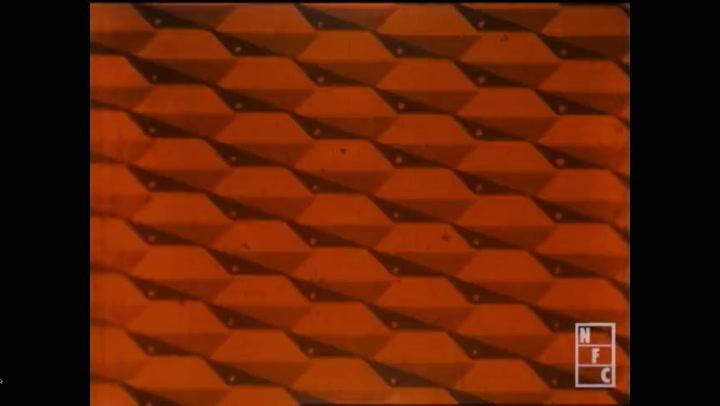
Aired: 1935
Genre(s): Avant Garde
Often used to describe art, avant-garde means something new and unusual or experimental. Satoshi Kon’s Perfect Blue and Kenji Nakamura’s Mononoke are perfect examples of innovative anime imitating art. Shigeji Ogino’s pioneering An Expression (1935) is one of the forerunners to the anime genre.
Using geometric shapes, An Expression follows an encounter between a man and woman. Shigeji Ogino uses a triangle pattern to represent the urban male and a circle for the rural female. The silent film uses these and other geometric patterns to explore the couple’s movement. An Expression uses Kinemacolor techniques, a process of using red and green filters with black and white film to create multi-color images. The film incorporates violent blinking so viewing may pose a health hazard for some.
Shigeji Ogino would achieve international acclaim for his experimental animation. His two works, An Expression and Propagate, would receive the international film festival’s St. Teccian Cup for 1935. Following World War II, he held courses and wrote articles fostering Japan’s next generation of animators and cinematographers.
9. Ethnicization of Politics
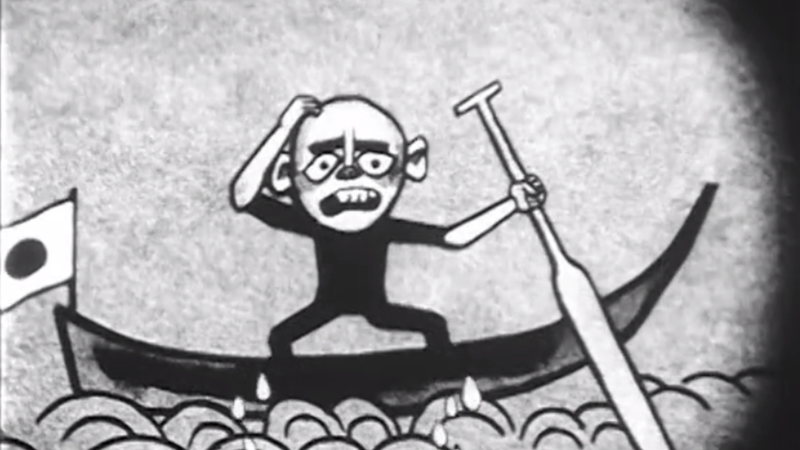
Aired: 1926
Genre(s): Historical, Political
The Taishō period (1912-26) defined a period of great disparity between the haves and have nots. Urban centers became a mecca for greed and political corruption whereas rural communities wallowed in poverty. Mayor of Tokyo and nationalist, Count Gotō Shinpei commissioned political cartoonist, Junichi Kouchi to animate a dissertation on the affairs of state.
The film begins with the crest from Japan’s Universal Suffrage Committee. This image gives way to Count Gotō Shinpei’s thesis, with a guided script and animation. His address includes themes of nationalism, rural and urban male equality and politics as service. He concludes by rallying young Japanese to change Japan’s inequity and support the Shōwa dynasty.
Ethnicization of Politics political narrative and imagery is unlike any other animated film on this list. If it were not for the talents of Junichi Kouchi, the film would have no character. Kouchi would go on to create several animated public relations films for the Japanese government. After releasing Cut up Serpent (1931), he exited the film industry and returned to being a political cartoonist. Junichi Kouchi’s Ethnicization of Politics is worth a view as it is a well-illustrated, historical time capsule.
8. Old Man Goichi
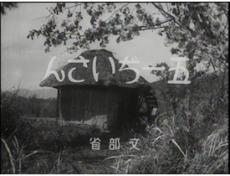
Aired: 1931
Genre(s): Fantasy
During the silent movie era, Polish-American Max Fleischer experimented with combining live-action and animation to create the Koko the Clown series. These short films would inspire his contemporaries, such as Walt Disney, to refine the art. In 1931, Sanae Yamamoto would refine Fleischer’s techniques to illustrate a live-action animated film for the Japanese Ministry of Education. His film would adapt a story from the third volume of the Elementary School Japanese Reader.
Using live-action, the film opens with a group of Japanese children begging ‘Old Man Goichi’ to tell them a story. Agreeing to their request, the live-action fades into an animated retelling of two popular Aesop Fables. The story is about two dogs fighting over a piece of meat until a wise monkey resolves their bickering. Lesson learned the story of greed concludes with the children bidding farewell to ‘Old Man Goichi.’
Sanae Yamamoto rose to prominence for his work for various Japanese government offices. Following World War II, he would establish Shin Nihon Dogasha to maintain the art of Japanese animation. Folded into Toei Doga, Sanae continued to produce works and mentor the next generation of anime artists. Although experimental, Old Man Goichi is an excellent example of pre-war Japanese live-action animation and worthy of a spot on this list.
7. Yoshichiro Salutes
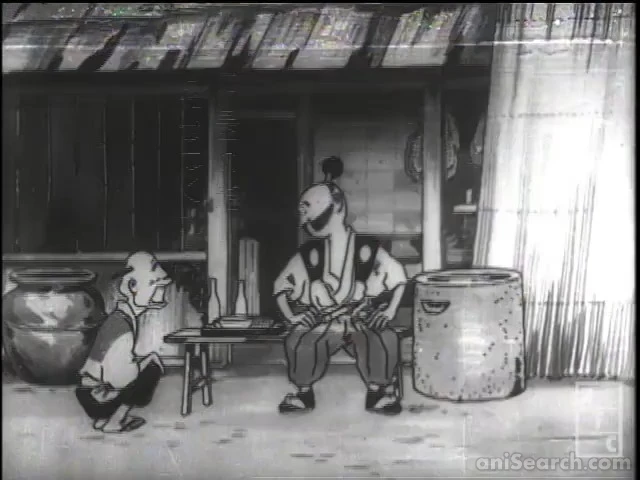
Aired: 1933
Genre(s): Historical, Samurai
An artist by trade, Hakuzan Kimura’s career began by painting signboards and set scenery before illustrating animated films. Under Hisashi Hashiguchi’s guidance, Kimura would make his anime debut with the historical drama Akagaki Genzo: Tokuri no Wakare (1924) for Asahi Kinema Ichikawa Photo Studio. Hakuzan Kimura would eventually illustrate the animated film Yoshichirou no Keirei for the Ministry of Education.
Yoshichiro Kamiya is a prideful samurai, whose martial arts skills earned him adoration of his peers and warlords. After an official fails to acknowledge his greeting, Yoshichiro assumes the official was disrespectful and begins to resent the perceived slight. The seeming insult causes Yoshichiro to throw a tantrum and become rude towards others. Eventually, Yoshichiro learns not find fault where there is none and be respectful.
Although monochromatic, Yoshichirou no Keirei is visually superior to similar animations of the period. Hakuzan Kimura’s characters show fluidity of motion while some of the choppiness seen in other illustrator’s works is absent. The complete animated film catalog of Hakuzan Kimura’s is unknown so Yoshichiro Salutes becomes a must-see for anyone who appreciates the art and history of anime.
6. The Stolen Lump
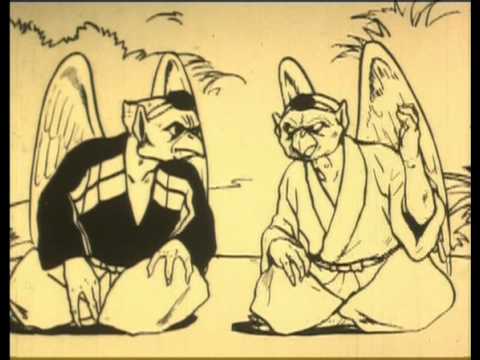
Aired: October 14, 1929
Genre(s): Comedy
A master of cutout animation, Yasuji Murata was a dominate force in Japanese pre-war anime illustrations. He would illustrate over twenty-three animated films covering educational, fairy tale and pre-war propaganda subject matters. Yokohama Cinema Shokai would produce The Stolen Lump under the direction of Chuzo Aochi.
Honest and hardworking woodcutter, Tarobei’s only distinguishing feature is an enormous facial tumor. While working in the forest, a thunderstorm forces him to seek shelter. After the storm passes, Tarabei emerges to discover a party held by a group of oni and he joins in the festivities. Enjoying the old man’s company, the demon king commanded his horde to rip off Tarobei’s tumor. Returning home, Tarobei recounts the miraculous tale to his lazy friend. Suffering from a similar infliction, Jirobei sets out to trick the demons into fixing him but things turned out very different.
Kobutori Jiisan originates from the 13th-century Japanese anthology, Uji Shūi Monogatari. The story promotes the themes that hard work and honesty bring their own rewards. These elements drive the story to be one of modern Japan’s most frequently recounted tales to young children. Yasuji Murata’s art direction and narrative longevity make The Stolen Lump a Pre-War anime favorite.
5. Nonsense Story, Volume 1: Monkey Island
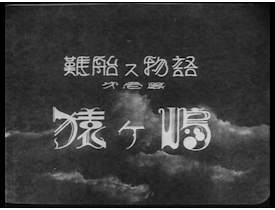
Aired: February 10, 1931
Genre(s): Adventure
Classically trained in Japanese-style painting, Kenzo Masaoka would begin his animation career working costume designer for director Shōzō Makino. Employed by Nikkatsu Uzumasa Studio, Masaoka would debut his animation career with the release of Nonsense Story, Volume 1: Monkey Island. Hideo Shimizu would adapt the narrative, with photography by Eiji Yoshiya and under the support of assistant creators Takuji Shimamori, Seiichi Harada and Masao Kumakawa.
Originally titled Shipwreck Su Story Volume 1 Sarugashima, this film follows the angst of a young child stranded on a monkey island. Upon arriving, a female monkey nurse feeds the infant who grows into a toddler instantaneously. As a juvenile, the child’s mischievous antics leads to the harming two younger monkeys. His escalating behavior results in the troupe expelling the child from the island.
Nonsense Story, Volume 1: Monkey Island received positive reviews following its release. Kenzo Masaoka’s artistic perspective would expand how Japanese illustrators would later create films, such as cel animations, talkies, and an exclusive orchestra. In spite of some comical character designs, the film’s creation team produced one of the period’s best anime.
4. Danemon’s Monster Hunt at Shojoji
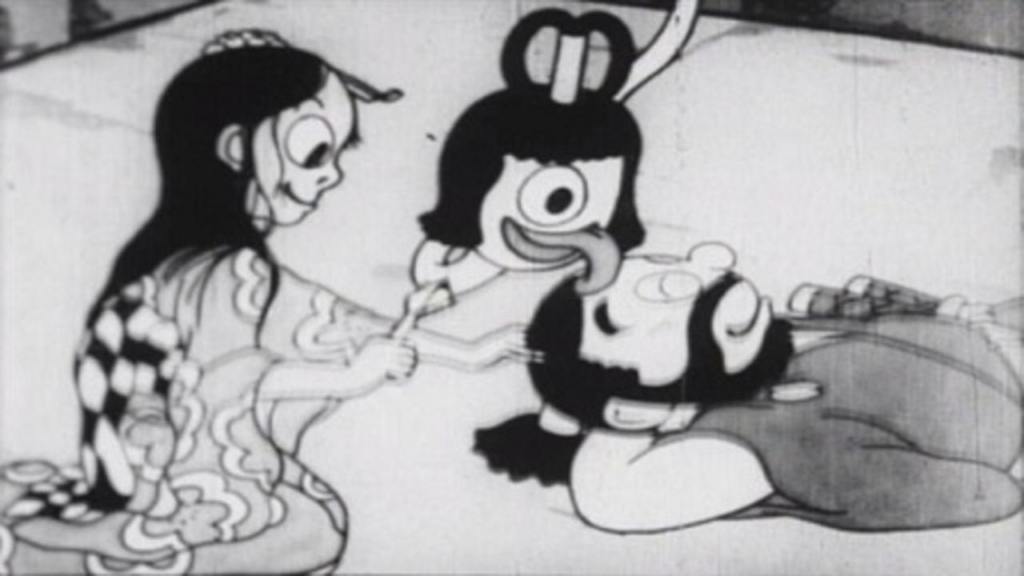
Aired: January 1, 1935
Genre(s): Supernatural
A student of Yasuji Murata, Yoshitaro Kataoka illustrated and directed the anime short Shōjōji no Tanuki-bayashi Ban Danemon for Nihon Manga Film Kenkyu-jo. Kazumitsu Masuda would wrote the script, with Tetsuo Nishigaki composing its score.
Desiring to collect the 1000 ryo reward, Danemon Ban journeys to the besieged palace to free it from a powerful yôkai. Entering the estate, the protagonist notices and frees a captive young woman. Freeing the woman, she reveals herself to be a mischievous raccoon dog yôkai and subdues the seasoned warrior. The Tanuki returns to their realm to celebrate its victory with other raccoon dog spirits but their celebration is a bit premature. Danemon Ban may be down but he is definitely not out.
With the release of Danemon’s Monster Hunt at Shojoji, Yoshitaro Kataoka demonstrates Japanese pre-war anime was on par with western animation studios. He would eventually take over Mitsuyo Seo’s “Monkey Sankichi” series but surprisingly his name and work is largely lost to anime history. With this understanding and thankfully, social media preserves the accessibility of Danemon’s Monster Hunt at Shojoji for fans of anime art and its evolution.
3. Spring Comes to Ponsuke
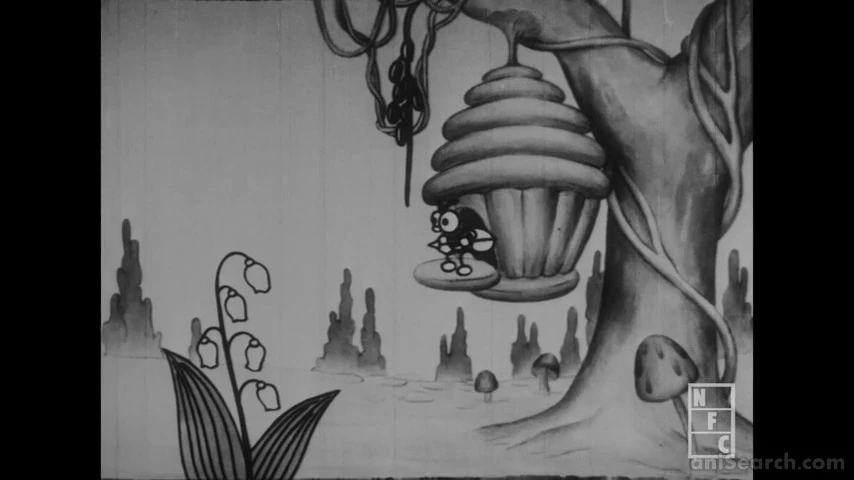
Aired: June 29, 1934
Genre(s): Comedy
Honing his drawing skills at Seiki Kuroda’s private school, Ikuo Oishi would illustrate his first animated film The Two Suns in 1929. He began his career at Shochiku Kamata Studio before landing at the Photo Chemical Laboratory, which is predecessor of Toho. A year before releasing Spring Comes to Ponsuke, Oishi created his magnum opus Ugoki-e Kori no Tatehiki.
Ponsuke no haru follows a young raccoon and his family’s efforts to forage for food in the snow. Digging for bamboo shoots, a family of crows mock Ponsuke’s inability to succeed. Eventually, he brings home a bamboo shoot but it would come alive and escapes his clutches. The raccoon family chases the plant across the landscape until the season transitions into spring. The season brings a bounty of food for the family and everyone celebrates.
Dubbed ‘Japanese Disney,’ Ikuo Oishi would have a hand in nurturing the careers of Shoji Ichino, Hiromasa Suzuki, and Soji Ushio. Unfortunately, Oishi would perish during the war in the Pacific. Fortunately, Ponsuke no haru preserves a sample of Ikuo Oishi’s pre-war animation talents. With this understanding, Spring Comes to Ponsuke is one of the leading accessible animated films of the period.
2. The National Anthem Kimigayo
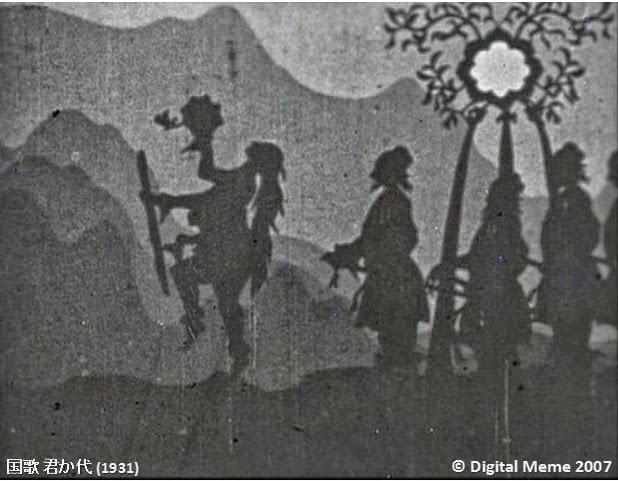
Aired: February 1931
Genre(s): Historical, Music
Inspired by German silhouette animations, Noburo Ofuji create Kakka Kimigayo for Banno Shoten for theater distribution. Ofuji apprenticed under Junichi Kouchi before developing his unique style by using cutouts from chiyogami, Japanese traditional decorative paper with colored patters. Theater owners would show The National Anthem Kimigayo before the start of featured films.
With the Tokyo Music School providing the score, Noburo Ofuji selected Japan’s creation myth for the film’s theme. The short opens with the chrysanthemum crest before revealing the creation gods Izanagi and Izanami. They thrust the Ama no Nuboko or heavenly spear into the sea and the water’s droplets create the islands of Japan. Displeased, the god Susanoo-no-Mikoto forces the sun goddess Amaterasu to hide. The gods send a heavenly kite to repel Japan’s evil spirits and disclose the three sacred treasures, a sword, jewel and mirror.
Kakka Kimigayo provide an introduction into Noburo Ofuji’s mastery of silhouette animation and employment of experimental techniques to narrate a story. His exploration would result in the incorporation of live-action, recorded dialog and Cinecolor into animation. Alongside Yasuji Murata and Sanae Yamamoto, Noburo Ofuji and his works are a pillar of Japanese animation.
1. Toro’s Train
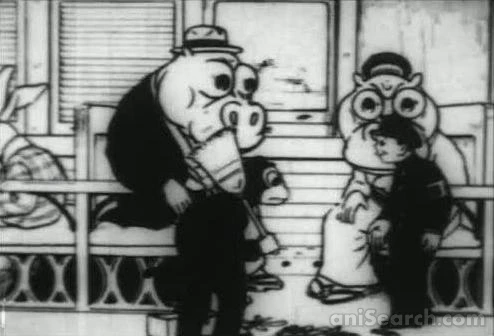
Aired: June 18, 1929
Genre(s): Action
Produced by Yokohama Cinema Shokai, Tarō-san no kisha is a favorite of the pre-war era animated shorts. Yasuji Murata demonstrates a mastery of animation by using traditional and stop-motion techniques to bring this fantasy tale of anthropomorphic rail passengers to life. As with some of Murata’s earlier works, Chuzo Aochi directs with photography by Yukikiyo Ueno.
A human train conductor, Taro-san works diligently to keep the train passengers and railroad workers safe and happy. The animal passengers are working equally hard to make life difficult for him. Passengers slipping on banana peels or workers receiving concussions from thrown bottles are just a couple of the hazards. In spite of the madness, Taro-san is always professional in his duty to assist his charges.
Tarō-san no kisha is an excellently drawn animated film. This film highlights Yasuji Murata mastery of illustrating and understanding character movement. In spite of the limited films surviving the period, Yasuji Murata’s Tarō-san no kisha is my pick for the best pre-war Japanese anime.
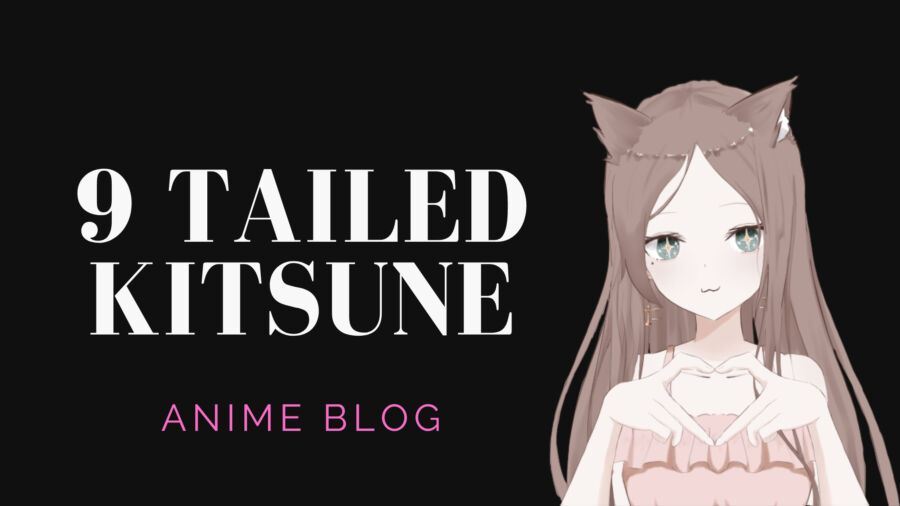
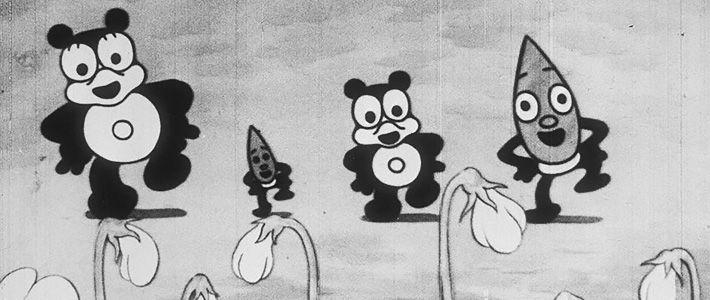
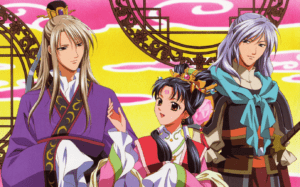
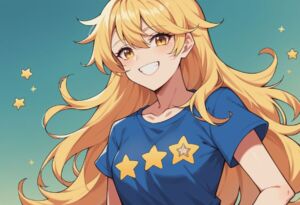

That’s a nice collection.